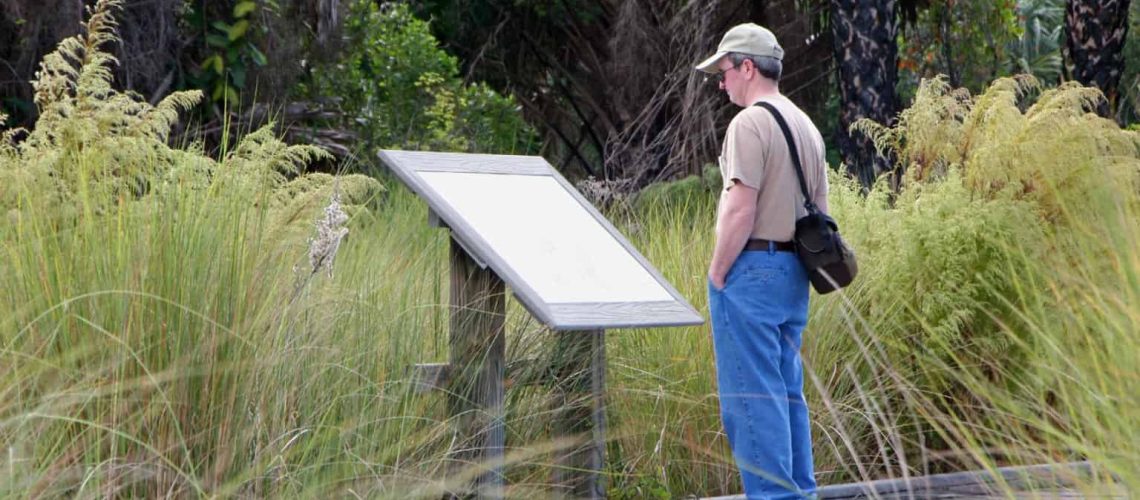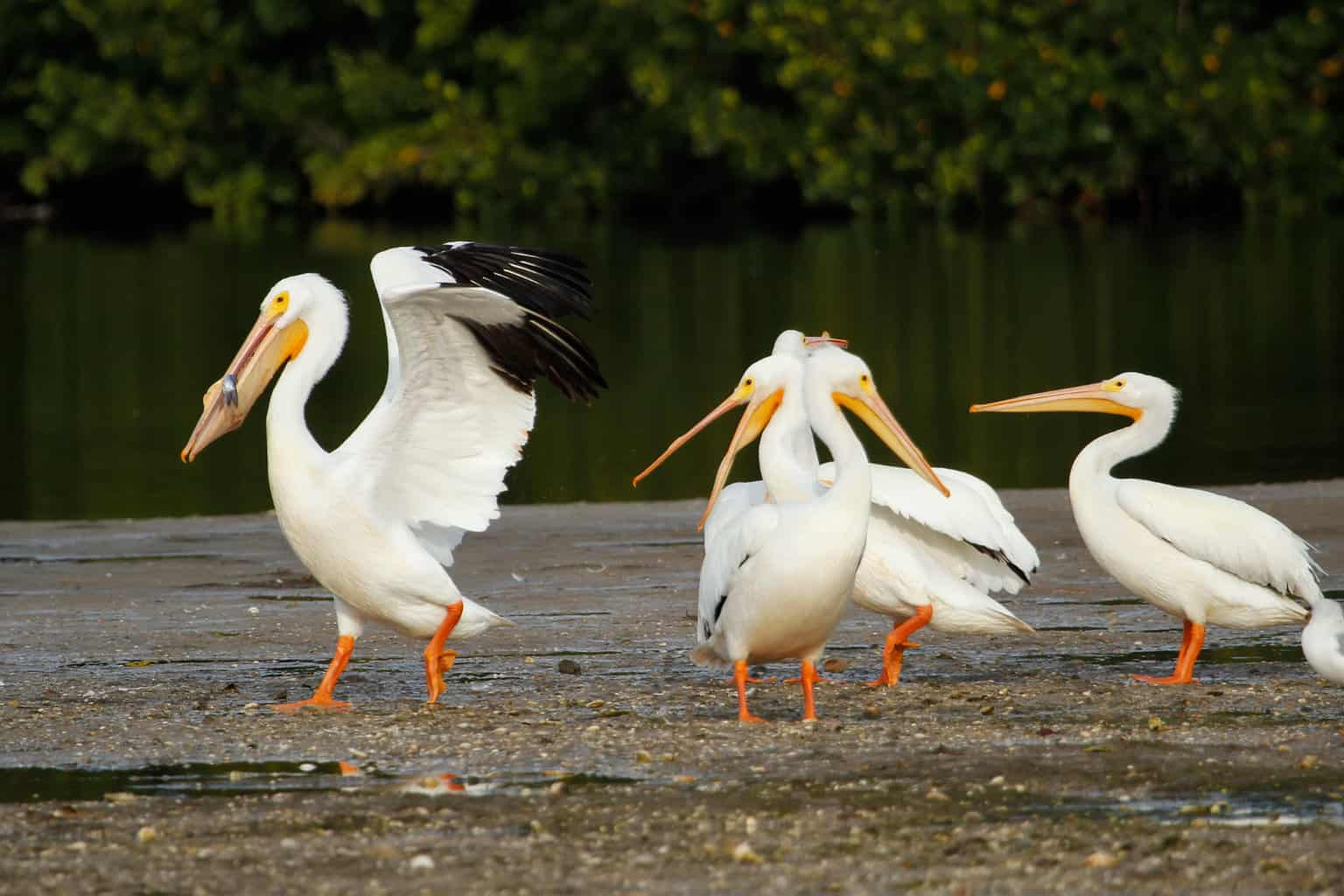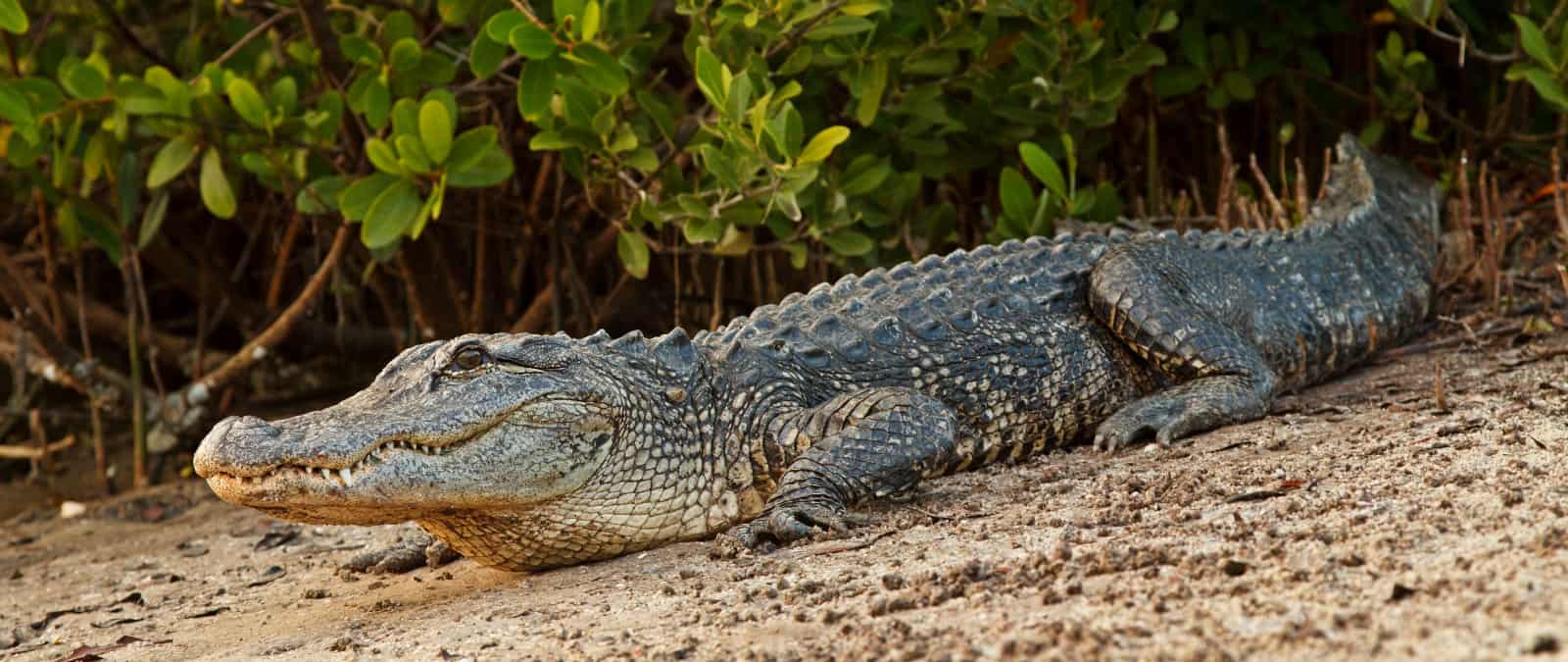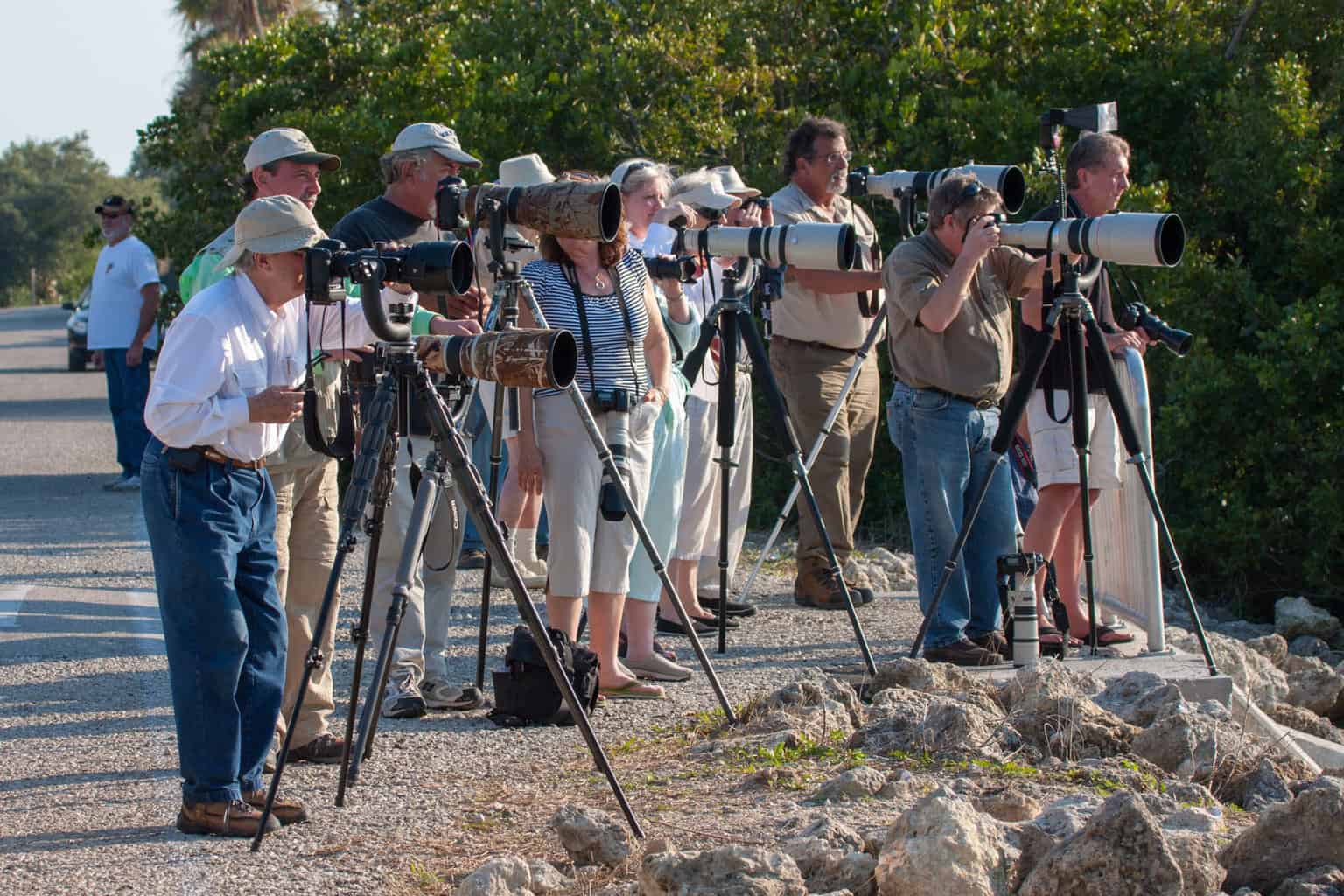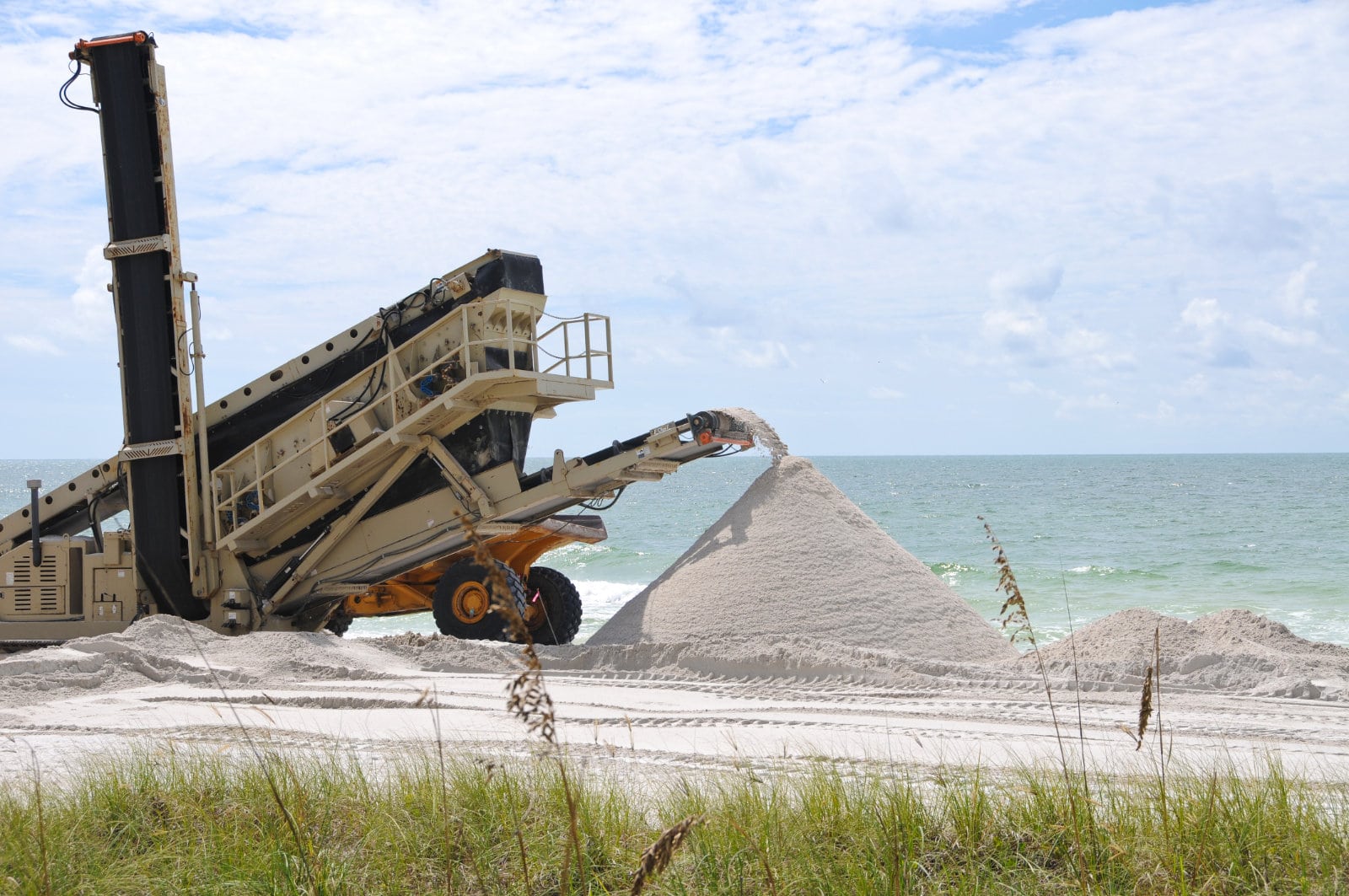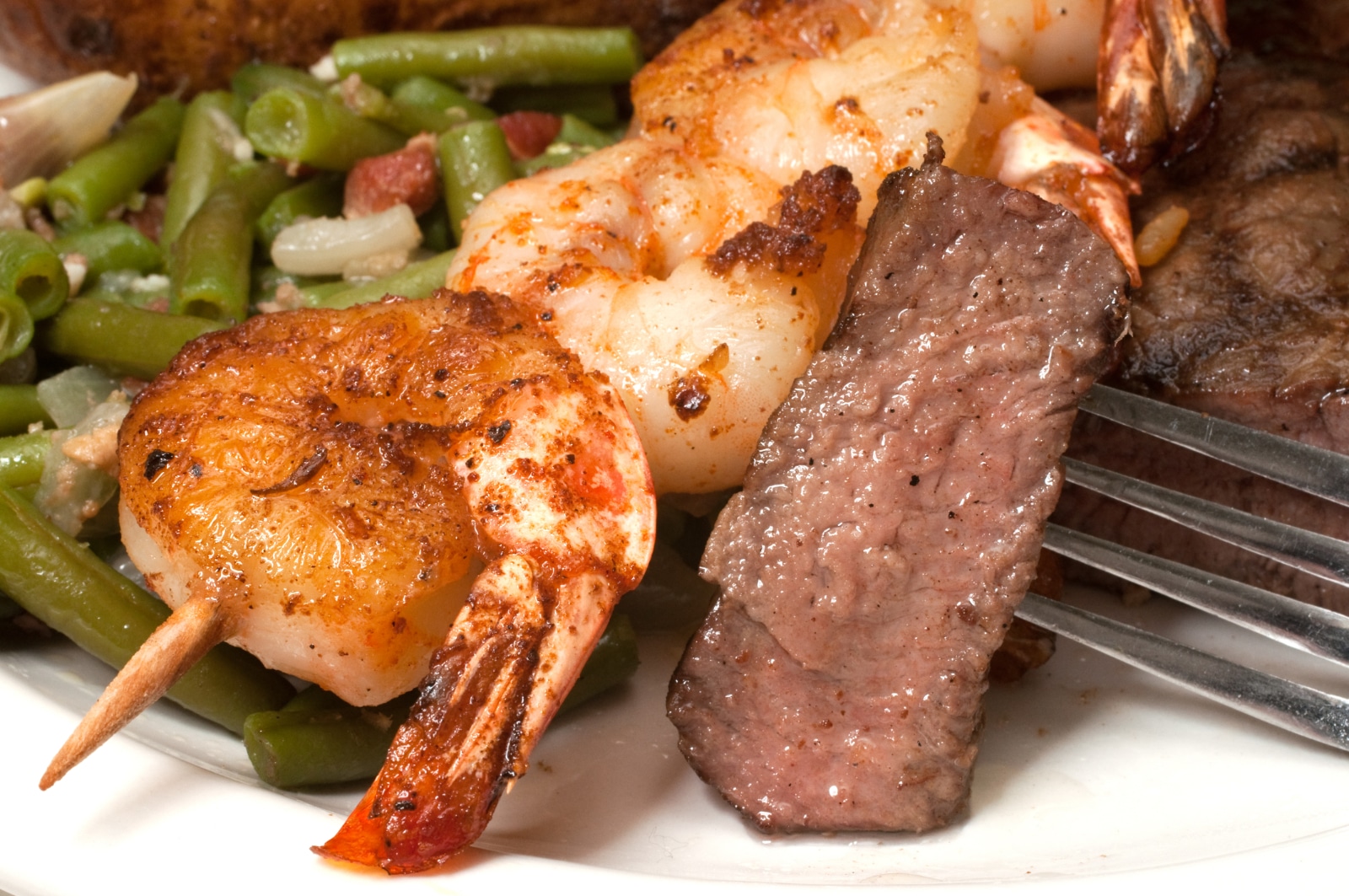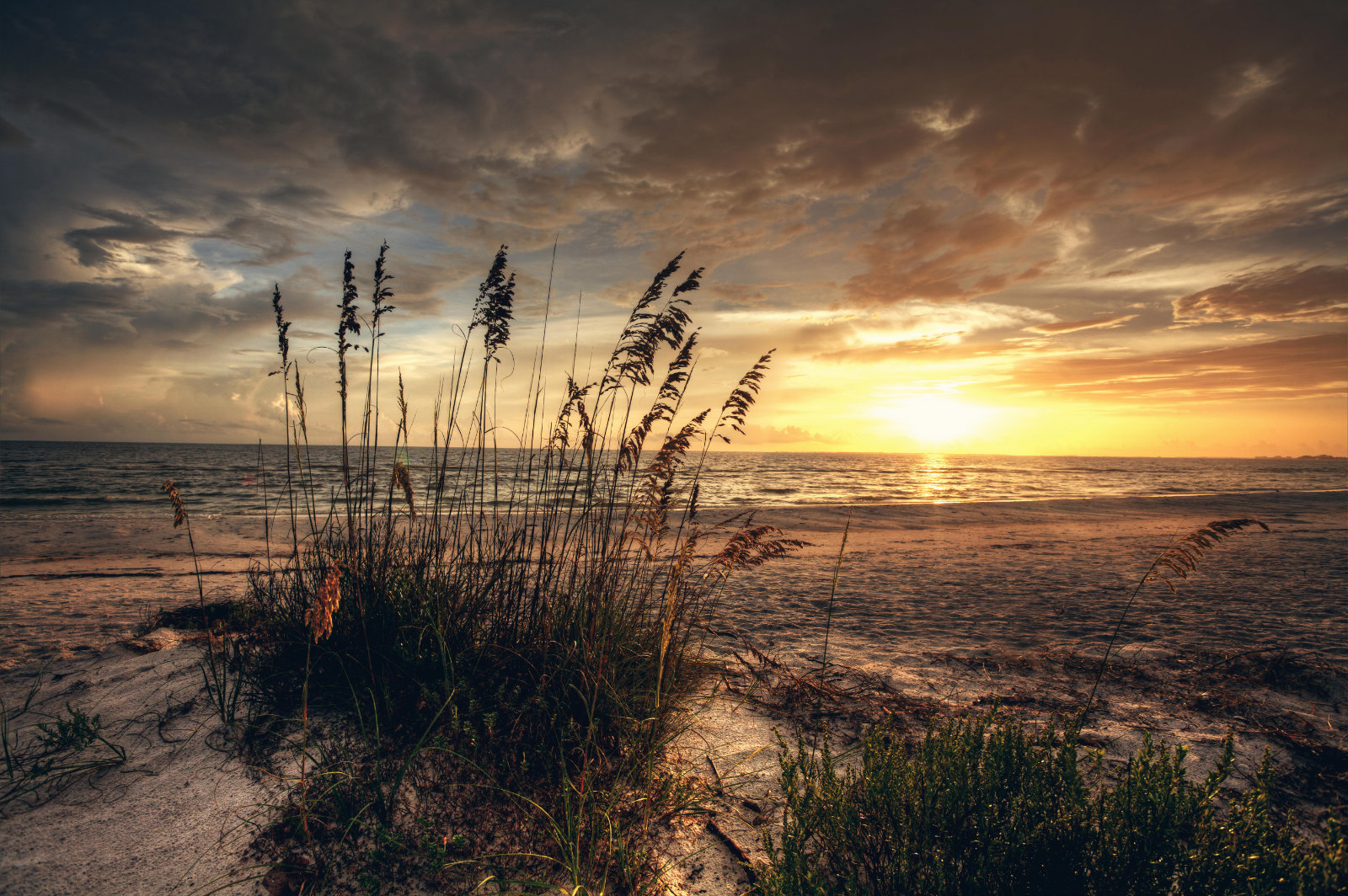If you are planning a trip to Sanibel Island in the Gulf of Mexico, then make sure that you plan your trip to include a stop at the Ding Darling Refuge. This refuge was created by an executive order signed by President Harry Truman in 1945, at the urging of J.N. “Ding” Darling. The 6,400-acre sanctuary is part of the largest undeveloped mangrove ecosystem in the United States. While you can walk or bike through the refuge, a 90-minute tram ride allows you to experience most of it. Depending on the time of year that you visit, you will have a completely different experience.
Spring at Ding Darling Refuge
If you arrive in early April, then you can spot white pelicans with their massive 9-foot wingspan along the coastline before they start their trip north to Canada and the Great Lakes region for the warmer months. The refuge’s beaches are also a popular nesting spot in April for snowy plovers who dig up the sand and add seashells before laying their eggs. You may also see black-necked stilts with their long thin legs nesting near the Bailey Tract. The birds, however, are not the only springtime attraction as you may see manatees and sea turtles mating. Keep your ears open, and you may hear alligators and frogs performing their mating calls.
Summer at Ding Darling Refuge
By the time that school gets out, most of the migratory birds will have moved north to colder climates. This is a great time to watch the nearby waters to see manatees playing. Explore the sandy areas of the refuge, and you may discover large nests of alligators. It is wise to keep your distance as momma alligators can become very aggressive. Each female alligator creates a nest that is up to 3 feet tall and 10 feet in diameter, where they lay up to 35 eggs. Baby alligators will crack their shells using a unique egg tooth. After they emerge, they are almost entirely independent.
Fall at the Refuge
As the hot days of summer begin to cool, some migratory birds start to return to the refuge on Sanibel Island. Although sea turtles mostly nest on the beaches of the southern Gulf shore of Sanibel (the Ding Darling refuge occupies most of the northern coastline) it’s worth noting that in late August, they begin emerging from their nests. About 50 days before the sea turtles start scampering, a female turtle laid about 100 golf-ball-sized eggs. The baby turtles stayed in their eggs all summer without any protection as their mothers went back to the open waters. As they start hatching, you can see them running towards the Gulf of Mexico.
Winter
One day is set aside between December 14 and January 5 to try to count all the birds at the refuge. You can join in the count as recording the number of birds is an important activity that has been conducted by the National Audubon Society for over 120 years.
Make the most of your time on the island by reconnecting with nature at this wildlife refuge that is home to sea turtles, migratory birds, alligators, manatee, and many other animals.


